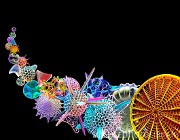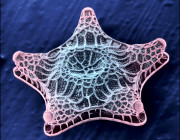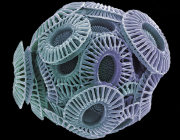Home :: List of Publicly Available Datasets :: Skeletonema marinoi skelA
Skeletonema marinoi skelA
Downloads:
| Principle Investigator(s) | Tatiana Rynearson |
|---|---|
| External sample ID | SkelA-SiLim |
| NCGR Sample ID | MMETSP0920 |
| Sample accession number | CAM_SMPL_003110 |
| Assembly accession number | CAM_ASM_000828 |
| Combined Assembly Name | Skeletonema-marinoi-SkelA |
| Genus | Skeletonema |
| Species | marinoi |
| Strain | skelA |
| Clonal | Yes |
| Axenic | No |
| Prelim. NCBI Taxon ID | 267567 |
| 18S rRNA | |
| Importance of organism and transcriptomes | |
| Additional citations and references | Borkman, D. G. and T. Smayda (2009). "Multidecadal (1959-1997) changes in Skeletonema abundance and seasonal bloom patterns in Narragansett Bay, Rhode Island, USA." Journal of Sea Research 61(1-2): 84-94; Kooistra, W. H. C. F., D. Sarno, S. Balzano, H. Gu, R. A. Andersen and A. Zingone (2008). "Global Diversity and Biogeography of Skeletonema Species (Bacillariophyta)." Protist 159(2): 177-193. |
| Environmental Data | |
| Primary citation for organism's characterization, if available | Sarno, D., W. H. C. Kooistra, L. K. Medlin, I. Percopo, and A. Zingone. 2005. Diversity in the genus Skeletonema (Bacillariophyceae). II. An assessment of the taxonomy of S. costatum-like species with the description of four new species. J Phycol 41:151-176. |
| Latitude | 41.573611 |
| Longitude | -71.408611 |
| Depth (m) | .5 |
| Salinity (psu) | 31.38 |
| Temperature (ºC) | 6.1 |
| Collection date | 22-NOV-10 |
| Collection time | 10:00 AM |
| Sample collection site | Atlantic_Ocean |
| Other collection site info | Narragansett Bay Long Term Plankton Times Series Station |
| Sample material (e.g. "seawater," "sediment," etc.) | Seawater |
| ENVO term for habitat - primary term | Acquatic: marine |
| Habitat description | estuary |
| Habitat | marine habitat |
| Country | UNITED STATES |
| Experimental Data | |
| Date of experiment | 23-MAR-12 |
| Growth medium | f/2 amended Sargasso seawater |
| Modifications to growth medium | f/2 for all nutrients except no Si added |
| Temperature (ºC) | 14 |
| Salinty (psu) | 36 |
| pH | 7.9 |
| Light (µmol photons / m2 / sec) | 180 |
| Day portion of day:night cycle in hours | 12 |
| Night portion of day:night cycle in hours | 12 |
| Nitrate (μmol/L) | 882 |
| Phosphate (μmol/L) | .6 |
| Investigation type | Eukaryotes |
| Other experimental metadata available | axenic |








